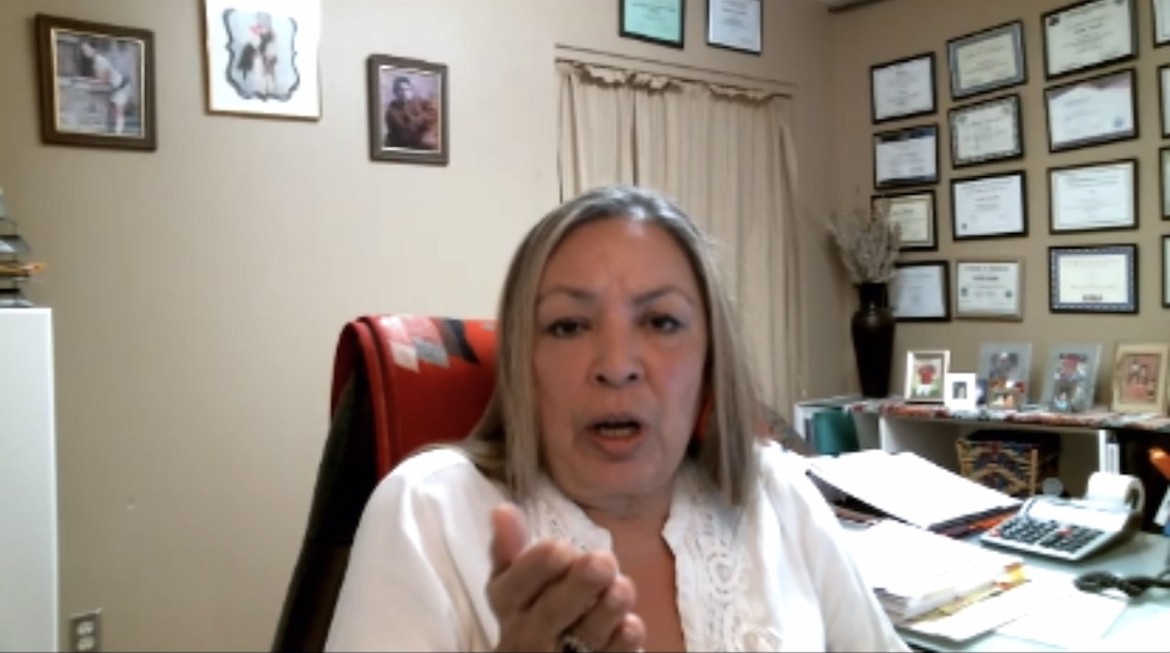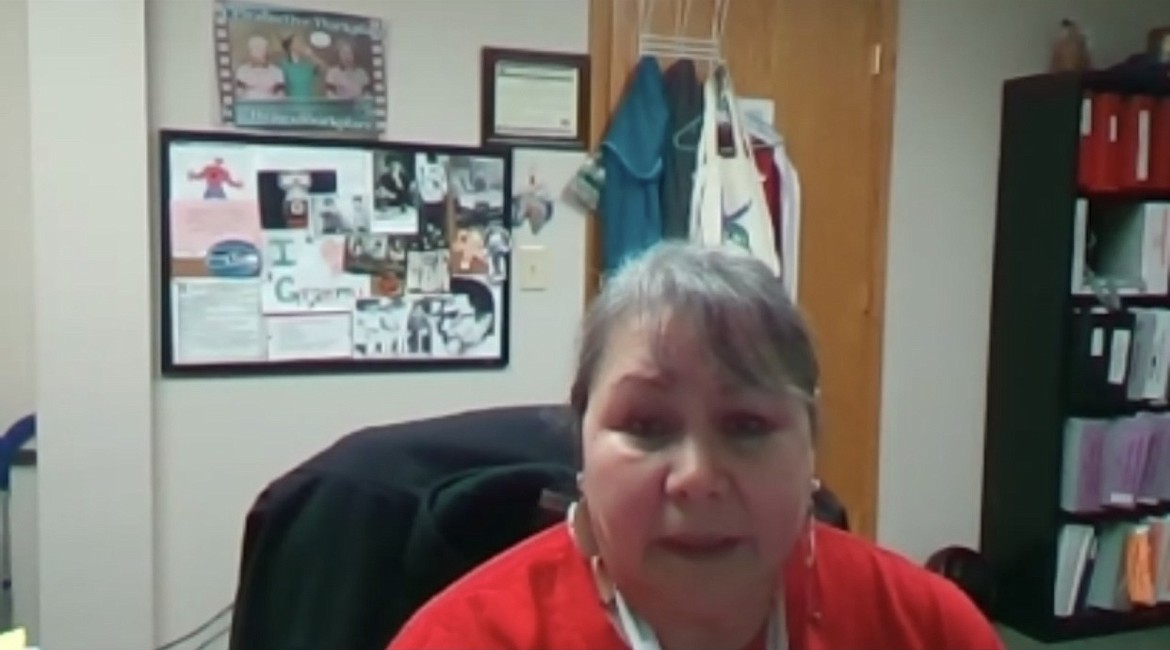Beyond Awareness
MADISON HARDY | Hagadone News Network | UPDATED 5 years, 1 month AGO
Last year nearly 5,600 Native American women were reported missing, and four in five were the victims of violence.
Mass movements across North America have raised awareness of missing and murdered indigenous people through organized marches, community meetings, building databases, local city council meetings, tribal council meetings, and domestic violence training for police. Still, statistics show that Native American women are more than twice as likely to experience violence as other demographics, and 33 percent will be sexually assaulted in their lifetime.
In recognition of Native American Heritage Month, the University of Idaho hosted Beyond Awareness: Panel of Experts on Missing and Murdered Indigenous Women and People, discussing hardships tribes face across the nation. The event was organized by the University of Idaho Native American Student Center, Native American Student Association, Native American Law Student Association, and University of Idaho Women’s Center.
“When it comes to our relatives who go missing or murdered, there aren’t even good statistics as to these cases as they are so underreported and poorly tracked,” said Dakota Kidder of the University of Idaho Native American Student Center.
That's partly due to lack of clarity in federal laws limiting what jurisdictions can investigate and how they operate on reservations—leading to a jurisdictional entanglement between tribal, national, and regional authorities.
The panel included executive director of the Coeur d’Alene Tribal STOP Violence Program Bernie LaSarte; Karee Picard, director of the ‘Uuyit Kimiti women’s outreach program; Lisa Brunner, co-curricular director and adjunct faculty of the White Earth Tribal and Community College; Lauren Chief Elk, a former legal assistant and crime mapper; and Natasha Anderson, staff attorney of the Nez Perce Tribe Office of Legal Counsel.
According to the panel, reporting a Native American tribal member is a long and complicated process that largely depends on the relationship between tribes and law enforcement officials. Often if there is a missing person on the reservation, families reach out to tribal police, later involving the Federal Bureau of Investigation and operating under dual jurisdiction.
“For the most part here on the Coeur d’Alene Reservation, we have a pretty good relationship with our FBI officers, so there is a lot of collaboration going,” Bernie LaSarte said. “The difficulty is off the reservation because I think state and local counties are not quite sure how to investigate or how to navigate the tribal system, so there is a real disconnect.”
The U.S. is home to 562 Native American tribes. Some operate under Public Law 280, allocating criminal jurisdiction to Indian reservations and taking away federal government authority to prosecute Indian crimes. Although there are exceptions for a few areas on selective reservations, Public Law 280 significantly limits federal criminal jurisdiction and expanded state jurisdiction.
Lisa Brunner lives and works on the White Earth Nation in Minnesota, a PL-280 tribe. Her reservation reports missing persons to local sheriff’s departments, then the county, and so forth. She’s seen the system fail firsthand.
A factor that inhibits law enforcement’s activity on locating indigenous persons, Brunner said, is general institutional racism, which stereotypes missing people with drugs or alcohol usage. Often families will search for a person first, reach out to relatives in the area, and retrace the lost one's routine. Only after that do they connect with law enforcement.
“We’ve had people go missing at White Earth, and by the time the families reported them missing, it was already two weeks,” Brunner said. “Then they report it to law enforcement who waits another two weeks before issuing a missing person report for someone who has already been missing a month.”
In those cases, the panel said a significant issue is minimal data collection by tribal, regional, and federal agencies.
Lauren Chief Elk took statistical mapping into her own hands through an independent study to develop factual information on the prevalence of sex crimes, domestic violence, and missing persons within the Native American community. After asking regional agencies on how and where they were reporting the data, she was disappointed with the result.
“There was a lot of hostility. Eventually what the answer was we’re not,” Chief Elk said. “Across the board, law enforcement does not care. They’re not keeping records, especially as we’ve moved into high technology policing.”
According to the FBI’s National Crime Information Center, there are more than 1,400 unresolved American Indian and Alaska Native missing person cases nationally. To address this, President Donald Trump signed an executive order in 2019 establishing the Operation Lady Justice Task Force to improve federal relationships with the tribal governments, develop case procedures, and better obtain and report data.
However, Karee Picard, a Nez Perce tribal member, said none of this has happened.
“It doesn’t require law enforcement to take action against missing and murdered. They are supposed to create procedures for us to follow, and there are jurisdictional issues it hasn’t addressed,” Picard said. “We are in the second year, and this is only a two-year order, and I have yet to see any results from it. He (Trump) tried to address all these deliverables, but nothing has happened.”
Just one small step in addressing the issue nationally, the panel noted, is increasing the education of tribal and non-tribal citizens. Through an expanded understanding of tribal governmental relations, local and regional Missing and Murdered Indigenous Women and Peoples groups, Native American history, and supporting foundations, a new wave of energy toward the centuries-long battle could form. There is no quick fix, but it is a problem that needs crucial attention, they agreed.
ARTICLES BY MADISON HARDY

CDA Tribe challenges redistricting
Says 'communities of interest' not served in new map
Coeur d'Alene and Shoshone-Bannock tribal leaders file suit against legislative boundaries

CDA Tribe challenges redistricting
Says 'communities of interest' not served in new map
Coeur d'Alene and Shoshone-Bannock tribal leaders file suit against legislative boundaries

CDA Tribe challenges redistricting
Says 'communities of interest' not served in new map
Coeur d'Alene and Shoshone-Bannock tribal leaders file suit against legislative boundaries





